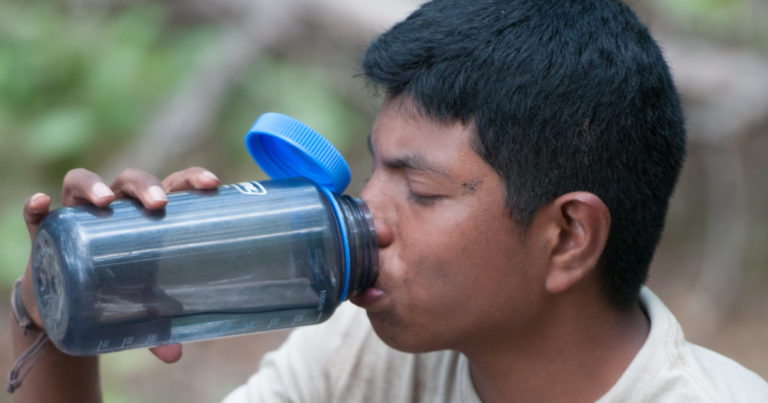Nalgene water bottles have surprising roots in the Boy Scouts of America

They’re carried on Philmont’s trails and clipped to canoe thwarts at Northern Tier. You’ll find them on every Florida Sea Base trek and Summit Bechtel Reserve adventure, too.
But you might be surprised to learn that Nalgene water bottles were created as lab equipment — not camping gear. It took the vision of the company’s president, and his Boy Scout son, to realize their potential in the outdoors.
In 1949, a chemist named Emanuel Goldberg developed a plastic pipette holder in Rochester, N.Y. The Nalge Co. was founded that year. The company made polyethylene laboratory equipment: centrifuge bottles, filter units, storage tanks and more.
Eventually, it became known that scientists at Nalge were taking small bottles out of the lab to use on weekend hikes and trips. The bottles were easy to carry and, most importantly, durable.

Popular in Scouting
In the 1970s, this unofficial practice caught the eye of Nalge Co. president Marsh Hyman. Hyman had a son in the Boy Scouts, and he started taking some bottles home for his son’s troop.
Hyman’s troop used the bottles to carry drinking water, store pancake mix, keep matches dry and transport all kinds of camping supplies. They were a hit.
Hyman went to the Nalge Specialty Department with a mission: Start selling these products to outdoor aficionados everywhere.
You know the rest of the story. Nalgene still makes labware, but the company is best known within Scouting circles for its outdoor-friendly water bottles.
And we have a Boy Scout troop to thank.

Did you know?
You can buy special Nalgenes for all four high-adventure bases: Florida Sea Base, Northern Tier, Philmont and the Summit Bechtel Reserve.
Editor’s note
In 2008, Nalgene stopped using the chemical bisphenol-a, or BPA, in its products. Studies have linked the chemical to health concerns.
Bottles manufactured by Nalgene before 2008 might contain BPA.
Nalgene water bottles have surprising roots in the Boy Scouts of America
